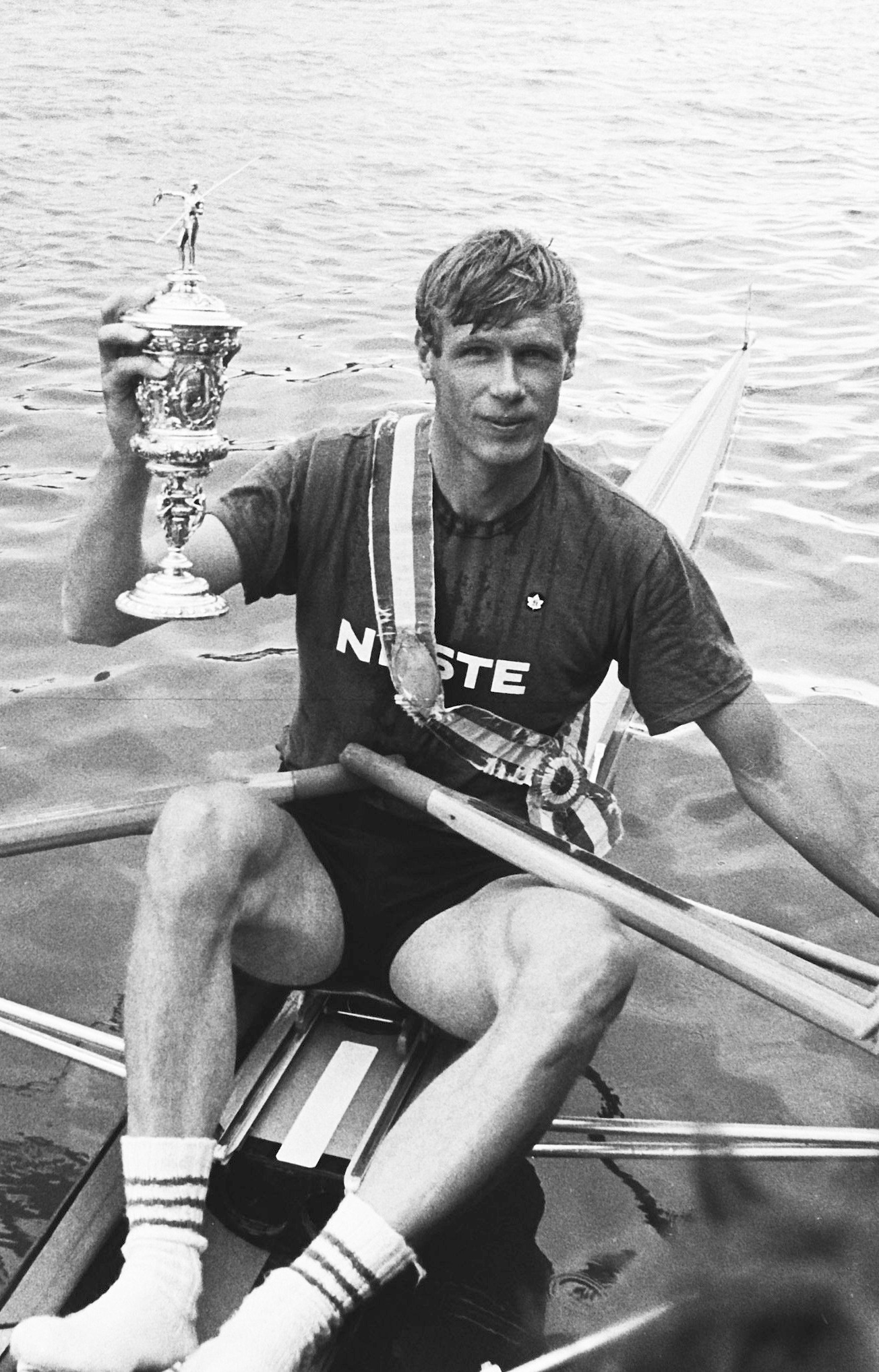1. Biography
Pertti Karppinen's early life and the beginning of his rowing career laid the foundation for his remarkable achievements in the sport.
1.1. Birth and Early Life
Pertti Johannes Karppinen was born on February 17, 1953, in Askainen, Finland, which is located in the Southwest Finland region of the Turku-Pori Province. Standing at 79 in (201 cm) tall and weighing between 216 lb (98 kg) and 225 lb (102 kg) during his competitive years, Karppinen possessed a physique well-suited for rowing. He was a member of the Naantali-based rowing club, Nesteen Soutajat.
1.2. Early Career
Karppinen's rowing career began to gain prominence leading up to his first Olympic appearance in 1976. While specific details about the very start of his career are not extensively documented, his rapid ascent to Olympic gold in 1976 suggests a dedicated and successful early period in the sport, honing the unique racing style that would define his legacy.
2. Major Achievements and Career Highlights
Pertti Karppinen's career was marked by numerous significant achievements, particularly his dominance at the Olympic Games and his strategic approach to racing.
2.1. Olympic Gold Medals
Karppinen achieved a rare feat in rowing history by winning three consecutive Olympic gold medals in the single sculls event. His first gold came at the 1976 Summer Olympics in Montreal, followed by another at the 1980 Summer Olympics in Moscow. He completed his historic treble at the 1984 Summer Olympics in Los Angeles. This accomplishment places him among an elite group of athletes, as he and Vyacheslav Ivanov of Russia are the only men to have won three consecutive Olympic gold medals in the single sculls.
2.2. World Championship Medals
Beyond his Olympic success, Karppinen also secured a notable collection of medals at the World Rowing Championships.
2.2.1. Single Sculls
In the single sculls event at the World Rowing Championships, Karppinen earned two gold medals, triumphing in 1979 and 1985. He also secured two silver medals in 1977 and 1986, and a bronze medal in 1987. He also placed 10th in the 1990 World Championships.
2.2.2. Double Sculls
In addition to his prowess in single sculls, Karppinen competed in the double sculls event. He won a silver medal at the 1981 World Rowing Championships alongside his younger brother, Reima Karppinen. He also placed 8th in the 1991 World Championships in this event.
2.3. Rowing Style and Records
Karppinen was renowned for his distinctive and often counter-intuitive race strategy. He was known for rowing a steady pace in the early and middle portions of a race, frequently trailing his rivals by several boat lengths. However, he would then unleash a powerful and devastating sprint in the final meters, often catching and passing his competitors right before the finish line. This "late sprint" style became his trademark. Furthermore, Karppinen once held the world record in indoor rowing, demonstrating his exceptional power and endurance even outside of on-water competition.
2.4. Major Rivalry
One of the most celebrated rivalries in the history of rowing was between Pertti Karppinen and the great German sculler Peter-Michael Kolbe of West Germany. They engaged in numerous fierce contests throughout their careers. Despite Kolbe accumulating more Olympic and World Championship medals than any other single sculler in history, he never managed to win an Olympic gold medal, a fact largely attributed to Karppinen's clutch performances.
Their most iconic encounters occurred at the 1976 Montreal and 1984 Los Angeles Olympic Games. In both races, Kolbe led for the majority of the course, only to be overtaken by Karppinen in the last few meters. Their rivalry did not extend to the 1980 Summer Olympics in Moscow, as West Germany chose to boycott the games in protest of the Soviet-Afghan War.
2.5. Later Olympic Appearances
Karppinen continued his Olympic career beyond his three gold medals. He competed at the 1988 Summer Olympics in Seoul, where he narrowly missed making the finals. He subsequently won the consolation race, securing seventh place overall. At these same games, Kolbe once again won a silver medal, this time being beaten by the emerging talent, Thomas Lange. Karppinen made his final Olympic appearance at the 1992 Summer Olympics in Barcelona, where he finished in tenth place.
3. Post-Career Activities
After concluding his illustrious competitive career, Pertti Karppinen remained deeply involved in the sport of rowing, transitioning into coaching and mentoring.
3.1. Coaching Career
Following his retirement from competitive rowing, Karppinen embarked on a coaching career. He has served as a national rowing coach, contributing to the development of Finnish rowing talent. In addition to his national duties, he has also personally trained his own children, Juho Karppinen and Eeva Karppinen, both of whom have gone on to compete in rowing at the international level, continuing the family's legacy in the sport.
4. Assessment and Impact
Pertti Karppinen's achievements have left an indelible mark on the sport of rowing, solidifying his status as one of its all-time greats.
4.1. Comparison with Contemporaries
Karppinen's legacy is particularly highlighted by his unique achievement of three consecutive Olympic gold medals in single sculls, a feat only matched by Vyacheslav Ivanov. This places him in an exclusive tier of rowing legends. His rivalry with Peter-Michael Kolbe further underscores his exceptional ability. While Kolbe amassed a greater total number of Olympic and World Championship medals, Karppinen's ability to consistently deliver gold in their direct Olympic confrontations, particularly with his signature late sprint, cemented his reputation as a formidable and clutch competitor. His strategic approach to racing, often coming from behind to win, captivated audiences and demonstrated a profound understanding of race dynamics and his own physical capabilities.
